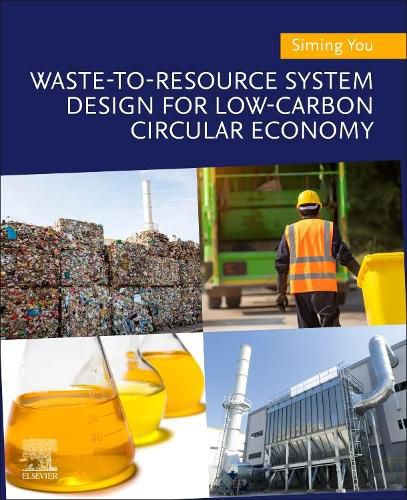Readings Newsletter
Become a Readings Member to make your shopping experience even easier.
Sign in or sign up for free!
You’re not far away from qualifying for FREE standard shipping within Australia
You’ve qualified for FREE standard shipping within Australia
The cart is loading…






Waste-to-Resource System Design for Low-Carbon Circular Economy equips the user with the necessary knowledge to carry out the preliminary design and optimization of economically viable and environmentally friendly waste-to-resource systems. This book covers the state-of-the-art development of technologies and processes in terms of six types of bioresources (i.e. energy, biohydrogen, biomethane, bioethanol, biodiesel, and biochar) that are recoverable from waste. The focused technologies and processes, such as anaerobic digestion, fermentation, pyrolysis, gasification, and transesterification are being widely applied-or have the potential to be used-towards sustainable waste management. It also covers the methods needed for the design and optimization of waste-to-resource systems, i.e., multiobjective optimization, cost-benefit analysis, and life cycle assessment, as well as systematic and representative databases on the parameters of the processes, costs, and the advantages and disadvantages of technologies. Finally, the book adopts a problem-based method to facilitate audiences to quickly gain the knowledge and skill of designing and optimizing waste-to-resource systems.
$9.00 standard shipping within Australia
FREE standard shipping within Australia for orders over $100.00
Express & International shipping calculated at checkout
Waste-to-Resource System Design for Low-Carbon Circular Economy equips the user with the necessary knowledge to carry out the preliminary design and optimization of economically viable and environmentally friendly waste-to-resource systems. This book covers the state-of-the-art development of technologies and processes in terms of six types of bioresources (i.e. energy, biohydrogen, biomethane, bioethanol, biodiesel, and biochar) that are recoverable from waste. The focused technologies and processes, such as anaerobic digestion, fermentation, pyrolysis, gasification, and transesterification are being widely applied-or have the potential to be used-towards sustainable waste management. It also covers the methods needed for the design and optimization of waste-to-resource systems, i.e., multiobjective optimization, cost-benefit analysis, and life cycle assessment, as well as systematic and representative databases on the parameters of the processes, costs, and the advantages and disadvantages of technologies. Finally, the book adopts a problem-based method to facilitate audiences to quickly gain the knowledge and skill of designing and optimizing waste-to-resource systems.